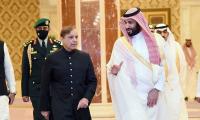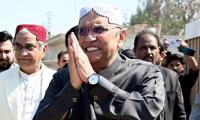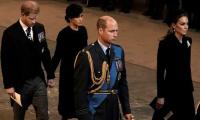It actually began way back before the country was formed. After the Quaid and his cohorts had determined that the parting solution was unlikely to carry equal representation in the ministries in the centre between Hindus and Muslims, socio-political triggers mutated to seeking an independent dominion.
Thus began the phase where a politically driven motive for a separate homeland began to be expressed as an economic imperative and the need for an equal opportunity for the large Muslim minority which would otherwise be overwhelmed by an even larger Hindu majority. Sounds familiar? Right from the history books – even better explained by independent historians of the calibre of Ayesha Jalal.
What vehicle did this new movement for an independent dominion ride on? The gradually germinating brand of separate electorate and the Two-Nation Theory which took root from the religious ethnicity of the Muslims, separate from the Hindus. The Subcontinent thus got divided on the lines of religion.
The Punjabi Muslim also got swayed into some more religious national slogans. Religion by default was thus sown in the foundations of this nation. Since ‘you’ used their vehicle to reach the destination, the Islamists weren’t just letting you forget that – even if they had in principle opposed the creation of Pakistan.
Soon after the Quaid passed away in 1948, the then prime minister of the dominion, Khan Liaquat Ali Khan, passed in the Constituent Assembly the Objectives Resolution which underpinned the flavour of the nation in strong religious terms. That killed any lingering debate over the issue of a secular nature of the state. It helps to keep in mind that both the ultra-right in the shape of Majlis-e-Ahrar and the ultra-left in the shape of the Communist Party of Pakistan were vibrant enough to assert their way in the national political culture of the initial days.
Mostly, to assuage any apprehensions among Islamists with greater potential to impact the political mindset of the masses, Liaquat Ali Khan chose to placate them to retain control over new nation’s central thought and political direction. However, this unintentionally contributed to a not so successful 1951 communist conspiracy to overthrow the government when those on the Left feared Islamisation of the fledgling nation. It may have in actuality spurred it in reaction for the fear of the impending rightist bent. The foundations of our future constitution were thus appropriately baptized. By some counts, Liaquat Ali Khan was to lose his life in due course to this persisting ideological tussle between the Left and the Right.
The first manifestation of this default ideological underwriting to the concept of Pakistan came when anti-Ahmadi riots broke out in 1953. Maulana Maudoodi of the Jamaat-e-Islami, and others including Majlis-e Ahrar took up the issue of khatam-e-nabuwwat to emphasise their existence as bona-fide purveyors of Muslim interests in an Islamic Pakistan. The Ahmadiyya issue was a useful vehicle to that end. In the company of other religious figures and their organisations, the first riots invited the first martial law to deal with the menace of religion as a popular tool. It is thence that Justice Munir in his report had first mentioned that “no two learned divines are agreed” on the fundamental of defining a Muslim. “If we attempt our own definition, as each learned divine has done….we unanimously go out of the fold of Islam”.
Soon the religious eminent(s) were in the fold of both Islam and politics however. All pretensions to a modern, non-theocratic state were gradually whittling away from under the feet as the state struggled to stand. One shouldn’t’ forget how the British controlled the natives by inducting pirs and holy-men from all across India. India itself escaped the consequences because on separation Muslims became a desperate minority where any thought of exercising assertiveness had to give way to survival. In Islamic Pakistan, however, it was a different story. The Muslim needed to be secured against his own. India remained lucky for decades, tasting some liberal and secular tradition. Till now, of course, when the saffron hordes are in control.
President Ayub took his support specifically from the three pirs of Golra, Makhad and Pagaro to retain a central control over the masses and their politics through placating their Barelvi followers. ZAB, when he eventually gave this nation a constitution in 1973, had to include a dedicated section to Islamic injunctions as a quid pro quo to getting the politico-religious leadership to sign on to it.
If earlier Islam existed as a political and cultural reality, it was now underwritten as a statute. A constitution had to be bartered into existence. Islam, or no Islam, common nationhood gets expressed by accommodation of diverse views in a common space. ZAB extended geopolitics in other ways too, especially in how he managed Afghanistan but that makes for a separate reading. This was the first formal baptism of Deobandi Islam as a stakeholder in the state.
But this invocation began to be far more geopolitically expressed under Ziaul Haq. He armed and supplied the Deobandi streak to express itself in the service of the US to fight its cold war in Afghanistan. The rest is history and this region hasn’t really recovered from it. Why I invoked ZAB earlier on Afghanistan was how the same sentiment converted the militant remains of Zia’s Mujahideen into the Taliban in 1996 by Nasirullah Babar, Benazir Bhutto’s interior minister. The Taliban since have kept the war flames going, engulfing the entire region as others from far and wide have entered battle.
Musharraf was an adventurist who used religion to pursue geopolitical ends, east or west or within. The Sharifs in the 1990s, and till recently, thrived on the religious vote for domestic political ends. Even as parts of Pakistan were under attack, Shahbaz Sharif had the gall to suggest to the militant hordes to spare Punjab. Till of course the Tehreek-e-Labbaik Pakistan (TLP) raised its slogans to rally the Barelvis to another demonstration of how religion could be used for other purposes.
Was the party encouraged to part ways with the Sharifs to hurt their chances at the polls? Remains moot though loudly proclaimed. It seemingly is a long shot that one would know beforehand that the TLP would vote some 2.2 million, disadvantaging the PML-N. That kind of detailed engineering is far-fetched. But the larger fact that the same vote could have added a few more seats to the PML-N is quite likely. The subject needs to be treated in detail to examine how the TLP became a party of consequence.
To assume that Pakistan’s Islamic credentials began only in 1977 with Ziaul Haq, though, is a travesty. The reality is far older and deeper in this nation’s foundations.
Email: shhzdchdhry@yahoo.com
Any progressive society or government will uphold security so that people can utilize their full potential
In Pakistan, we have witnessed erosion of public trust in government institutions
Capability, accountability, and responsiveness don’t quite capture the increasingly important issue of legitimacy
The government can directly influence economic activity through current and capital expenditure
A view of the Supreme Court of Pakistan. — Supreme Court website/FileWhat kind of firewall does the judiciary...
Indian soldiers stand alongside a barbed wire on the Line of Control. — AFP/FileAnti-Pakistan propaganda remains a...







